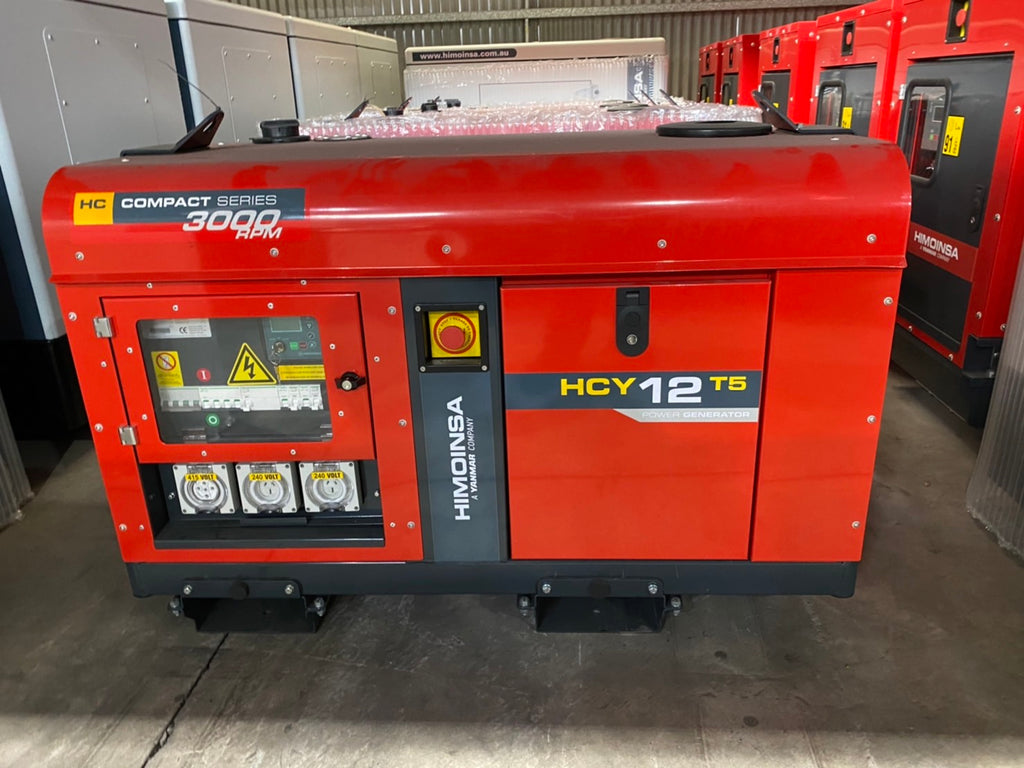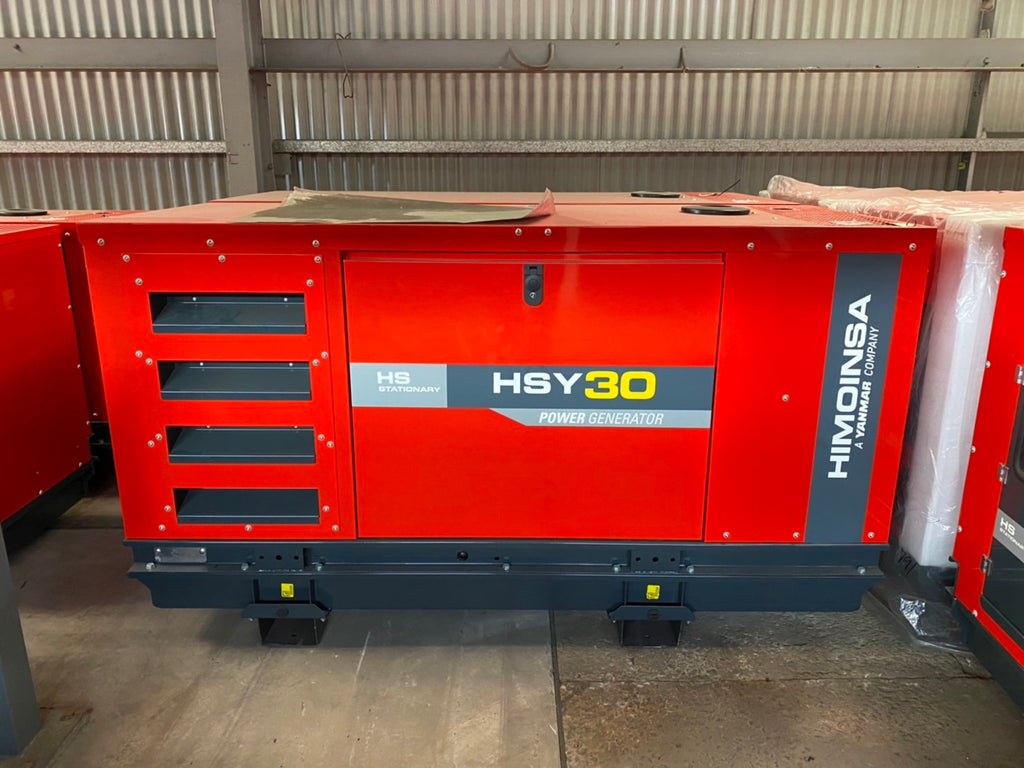
Tracing the Roots: The Fascinating History of Diesel Generators
Diesel generators are a stalwart of backup and emergency power systems across various industries and locations. Their ability to reliably produce electricity makes them indispensable. But where did diesel generators originate? How much has fundamental technology transformed over the past century?
This post will explore key diesel generator facts surrounding their origins, evolution, work, and applications. Understanding this background will help you better leverage diesel generators for your needs today and tomorrow.
Rudolf Diesel’s Engine Invention
It all started with German inventor Rudolf Diesel in the late 1800s. At the time, steam engines dominated heavy machinery and transportation. But their maximum efficiency peaked at just 10%.
Diesel aimed higher - his new engine design operated on the principle of internal combustion. Air is drawn into a cylinder and compressed to very high pressures, heating it tremendously. Then fuel injects into this hot air and ignites spontaneously. This produces rapid expansion that drives the piston down to produce mechanical power.
Key advantages:
- Much higher efficiency - Diesel calculated up to 75% efficiency theoretically!
- More excellent power-to-weight ratio compared to the steam engine
- No need for an external ignition source like a spark plug
Diesel received patents for his revolutionary engine design in 1892 and 1893. This paved the path for the modern diesel engine’s genesis.

Early Adoption Phase
In the first couple of decades after its invention, Diesel’s engine quickly found homes powering:
- Cars and trucks
- Trains
- Boats and submarines
- Factories and mills
- Pumps, generators, and heavy machinery
It reliably supplied efficient mechanical power where needed. The simplicity of its working also made adoption straightforward.
Over time, diesel engines almost ubiquitously transitioned from gasoline to handle all heavy-duty vehicle propulsion and electricity generation. Their efficiency and durability proved decisively better suited for these roles. And this takeover by diesel has shown no signs of slowing down since!
Accelerating Technological Improvements
The early 1900s saw tinkering to improve diesel engines, but the World Wars and interwar periods honestly acted as technology springboards.
Global militarization and the subsequent need to rapidly innovate, produce, and optimise armoured vehicles left its mark. For example, the famous Russian T-34 battle tank relied on a powerful 500 HP diesel engine. Many minor and significant advancements achieved during wartime found their way into commercial applications when the wars ended.
The economic prosperity postwar created further impetus. Rising living standards and mass industrialisation required commensurate energy demand. Diesel generator installations boomed to meet these infrastructure needs reliably and efficiently.

Here are some key diesel engine innovations through the decades:
- 1920s - Introduced improved fuel injection systems
- 1930s - Turbochargers integrated for higher outputs
- 1940s - Stronger engine blocks handle increased pressures
- 1950s - New combustion chamber optimisations
- 1960s - Economy circuits for idling reminiscing fuel use
- 1970s - Electronic controls and sensors added
- 1980s - Direct fuel injection enhances atomisation
- 1990s - Common rail direct fuel injection was invented
- 2000s - Hybrid drives, biofuels, exhaust after-treatments
The quest for ever-greater performance, reliability, fuel economy, and meeting emission norms continues driving advancement. Diesel engines have improved tremendously in all these aspects over more than a century of focused development.
Modern Diesel Generator Systems
Before we dive further into applications and trends, let’s quickly demystify what makes up diesel generators:
Key Components
- Engine - Provides mechanical power through internal combustion
- Fuel system - Transfers and injects diesel into the engine
- Alternator - Generates AC electricity using rotational energy
- Batteries - Starts the engine using stored energy
- Control panel - Houses monitor gauges and generator controls
- Exhaust system - Emits hot gases safely away from the generator
Electricity Generation Process
- The motor draws air into its cylinder and compresses it
- Diesel is injected into this compressed hot air and ignites
- Rapid expanding gases push the piston down
- The piston connects to the crankshaft through the connecting rod
- The crankshaft rotates the alternator to produce electricity
This electricity supplies whatever load connections exist - appliances, machinery, computing devices, etc. Modern innovations also allow sophisticated digital control of all these generator aspects for optimal performance.
Sustainability and Future Trajectories
While traditional diesel engines rely solely on fossil fuels, renewable alternatives have emerged recently. For example, biodiesels from vegetable oils, animal fats, algae oils, etc., can replace or supplement petroleum-based diesel usage.
Biodiesels possess fuel properties like diesel and require no or minimal engine modifications for compatibility. And using renewable, organic feedstock renders their combustion more carbon neutral.
Hybrid generator systems present another promising green solution. These combine diesel generators with renewable sources like solar, wind, or hydropower integrated via appropriate charge controllers and inverters. Intelligent automation balances the hybrid generator mix for maximum renewable usage and minimum diesel consumption.
Such systems demonstrate substantially lower fuel requirements, emissions, and costs than standalone diesel generators. Renewable energy trends will only accelerate their adoption.
Ongoing R&D also focuses on improving engine efficiency through innovative combustion strategies, substituting steel components with lighter alloys, adding better catalytic converters to minimise exhaust pollution, and more.
Alternative fuels like hydrogen, liquefied natural gas (LNG) or syngas from biomass may also eventually supplement or replace diesel. However, diesel engines will continue dominating commercial generator applications in the foreseeable future.
Industry Trends and Applications
Diesel generators supply vital electricity for various industries and use cases. Let’s look at some notable examples and trends.
Construction
Portable diesel generators frequently power tools, lighting, and temporary structures on construction sites with little or no grid connectivity. Their high reliability ensures minimal disruptions to project timelines. Intelligent power monitoring and controls further optimise generator performance and fuel usage.
Mining
Mines often exist off-grid and require heavyweight machinery. Here, robust, high-capacity diesel generators reliably energise extraction equipment, ventilation, lighting, communications, administration facilities and more. Strict emission norms do pose challenges, but technological solutions continue to advance.
Agriculture
Diesel generators assist in various farming activities - irrigation pumps, crop processing plants, hatcheries, dairy operations, etc. Their ability to handle frequent motor starts and load variations works well. Rising fuel prices necessitate improving existing systems and exploring hybrid renewable energy alternatives.
Entertainment
Major event venues and productions depend on diesel power to temporarily create mini off-grid facilities. Generators feed sound systems, lights, pyrotechnics, broadcast equipment and more. Load analysers help better plan for demand peaks and avoid overloads.
Military
Diesel fuels a majority of military vehicles, as well as rapid-deployment generators for temporary camps and infrastructure. Despite extreme operating conditions, high reliability and performance make diesel irreplaceable despite its logistical footprint. Alternatives do see increasing prototyping and testing for further improving ecological sustainability.
These examples show diesel generators immense versatility across needs, surroundings, and capacities. Their ubiquity looks set to continue expanding globally.
Buying used systems can provide significant cost savings for lower-budget buyers. Well-maintained used generators typically have 60-80% of operating life left but are available at substantial discounts over new models. Just ensure that you inspect the unit thoroughly before purchase.
Maintenance Best Practices
No machine lasts forever without proper care - and generators are no different. However, adhering to specific guidelines can maximise your system’s lifespan and return on investment.
Follow scheduled preventative maintenance OCD (obsessive-compulsive disorder)! This keeps all elements clean, lubricated, adjusted and functional for minimising abnormal wear or unexpected failures. Always use manufacturer-recommended parts and fluids as well.
Modern generators also embed various sensors for tracking health metrics like oil pressure, temperature, battery charge, etc. Monitoring these regularly lets you catch impending problems early. Diagnostic testing kits help further investigation during scheduled maintenance.
During periodic generator runs, check the exhaust as well. Consistently thick, black smoke indicates improperly burning fuel requiring engine tuning. And ensure loads connect securely with no loose wiring threatening eventual shorts or fires.
For standby generators, monthly cycling for 30 minutes assists in preventing moisture buildup and subsequent corrosion. Frequent full-power load checks help maintain engine health, too, compared to just idling. Generally, aim for 50-75% of the rated load at least once yearly.
And when not using the generator for extended durations, properly preserving it lowers restarting hassles. Fuel stabilisers, battery tenders, rust inhibitors, water displacement spray, and covers all help reduce deterioration.
The overall industry average lifespan falls around 10,000-20,000 hours, given proper usage and maintenance. But with extra TLC, crossing 30,000+ hours requires no surprise!
Conclusion
We’ve covered tremendous ground chronicling diesel generators - from Rudolf Diesel’s late 19th-century engine invention to present-day cutting-edge systems powering vital activities globally.
Diesel engines have come far from their early roots over more than 125 years of focused tinkering and innovation. And they look sure to keep turning the wheels of progress everywhere for decades through continual evolution.
Whether you need backup power or off-grid electricity for home, work or play, diesel generators are reliable. Their reputation for durability rightfully earns them a coveted place supplying vital energy worldwide.
And the push towards more renewable hybrid generators and biodiesel compatibility makes their future appear greener than ever. We can expect even cleaner and brighter eco-friendly models to emerge, fulfilling electricity demands, large or small.
This glimpse into diesel generators - their history, working, usage and potential - offers some food for thought. Do share your experiences with these stalwart engines powering your activities reliably!
